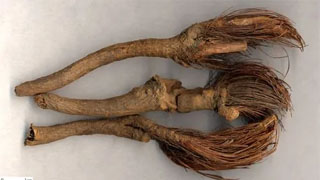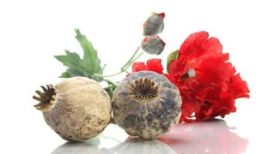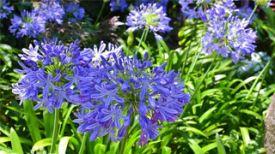
1. Alias
Qizhou Loulu, Yelan, and Heshangtou.
2. Plant morphology
Perennial herb, densely covered in white fluffy hairs. The root is fleshy, conical in shape, with a diameter of 1-2.5 centimeters, and has several buds at the root tip or remains of root leaves densely covered with white hairs. The stem is single and upright. Leaves alternate, petioles are long, leaves are feather shaped and deeply lobed, long elliptical to lanceolate, edges usually have irregular shallow fissures, both sides have white hairs, and leaves on the upper part of the stem are sparse. The inflorescence is solitary at the top of the stem, with broad bell shaped bracts, multiple layers, and dry membranous appendages. All flowers are tubular, light purple in color, with slender corolla tubes, 5-lobed tips, linear lobes, 5 stamens, and multiple flowers. Achenes are oblong in shape.
3. Origin distribution
Born in dry mountainous areas. Distributed in Heilongjiang, Jilin, Liaoning, Inner Mongolia and other places.
4. Harvesting and processing
Excavate in spring and autumn, remove soil and roots, and dry in the sun. Generally, those excavated in autumn are thicker and of better quality.
5. Characteristics of medicinal herbs
Inverted conical cylindrical shape, some slightly twisted or flattened, usually unbranched, intact measuring 10-30 centimeters in length and 1-2.5 centimeters in diameter. The surface is dark brown or black brown, rough, with irregular longitudinal grooves and diamond shaped mesh cracks, and the outer skin often has peeling cracks. The root head is swollen, with a few stem bases and scaly petiole residues, and gray white hairs at the top. Lightweight and brittle, easily breakable. When broken, the skin often separates from the wood, and the skin has a darker color. The wood is yellow white and arranged in a radial pattern. The wood rays often rupture, and the center of the wood becomes a star shaped crack due to decay, appearing dark brown. Qi is unique, with a slightly bitter taste.
6. Sexual Taste Returning to the Classics
Cold in nature and bitter in taste. Returning to the Stomach Meridian.
7. Effect and Function
Clear heat and detoxify, expel pus and promote lactation. Belonging to the category of heat clearing and detoxifying drugs.
8. Clinical application
The dosage is 4.5-9 grams. Take decoction orally or add pills and powder to treat breast swelling and pain, milk obstruction, back abscess, and ulcers. For external use, decoct and wash with water or grind and apply with powder. Pregnant women should use with caution. To treat mumps: 5g Banlangen, 7.5g Chuanlu, 2g burdock, 2.5g licorice, decoct in water and take orally.
9. Pharmacological research
Anti atherosclerosis; Lowering blood sugar levels; Inhibit the generation of peroxidized lipids; Antioxidant; Inhibit the activity of type B monoamine oxidase in rats; Liver protection and other functions. The alcohol extract of Qizhou reed has certain antibacterial activity against Staphylococcus aureus and Pseudomonas aeruginosa; The water immersion agent has varying degrees of activity against 14 types of skin fungi; Water decoction can significantly inhibit the generation of peroxidized lipids in the brain, liver, heart, kidney, and serum of rats and mice; The alcohol extract can significantly inhibit the activity of rat brain mitochondria and liver monoamine oxidase B; Feeding rabbits and quails with high-fat diet and simultaneously administering water decoction of reed can reduce blood cholesterol and peroxidized lipids, increase the ratio of prostacyclin and thromboxane AF, reduce leukocyte infiltration in arterial walls, and inhibit smooth muscle cell proliferation. Toxicity: LD50>25g/kg orally administered to mice.
10. Chemical composition
Containing β - ecdysterone and other ecdysterone compounds, volatile oils, and some lipophilic components. It also contains ingredients such as Cardopatin, IsoCardopatin, Leuciscinae, Glycyrrhizin, etc.
11. Usage taboos
It is contraindicated for patients with genital ulcers and pregnant women.
12. Compatibility prescription
① Treatment of carbuncle, swelling and toxin: 15g of reed, 9g of forsythia suspensa, 12g of yellow cypress, 3g of rhubarb and 3g of licorice each. Boil it in water. (Hebei Chinese Herbal Medicine)
② Swelling and swelling of breast abscess: 15g each of reed, dandelion, honeysuckle, 9g of Fritillaria, and 6g of licorice. Boil it in water. (Shanxi Chinese Herbal Medicine)
③ Epidemic parotitis: 4.5 grams of reed, 3 grams of indigo root, 1.2 grams of burdock seeds, 1.5 grams of licorice, decoct in water and take orally. (Handbook of Chinese Herbal Medicine in Xinjiang)
④ Treatment for uterine cancer: 24 grams of reed and 18 grams of stir fried Malanzi. Boil in water and take 1 dose daily. (Traditional Chinese Medicine Secret Test Formula)
⑤ Postpartum milk deficiency treatment: 15 grams each for Luo Lu and Wang Bu Liu Xing, 12 grams for Lu Lu Tong, and 6 grams for Tong Cao. Boil it in water. (Hebei Chinese Herbal Medicine)
⊙ The content of the article is for clinical reference only. Non TCM professionals are not allowed to test drugs.


